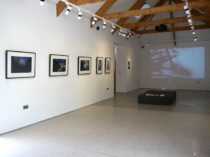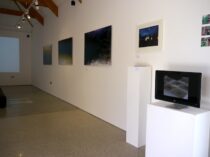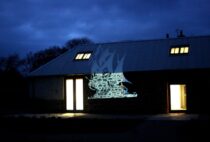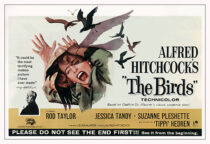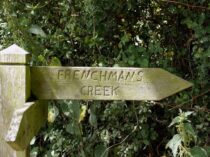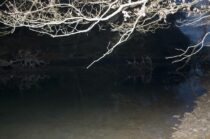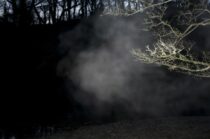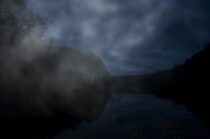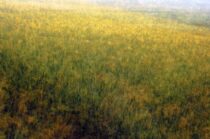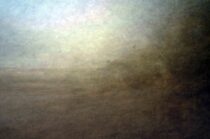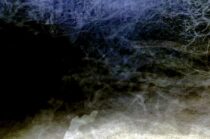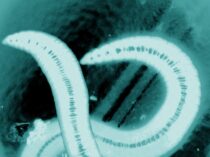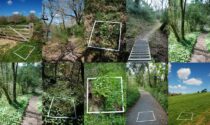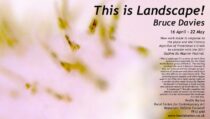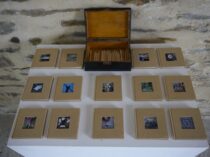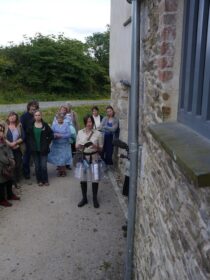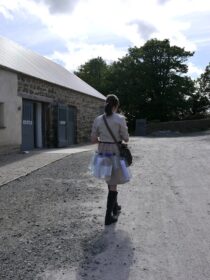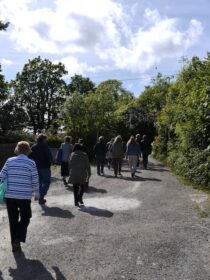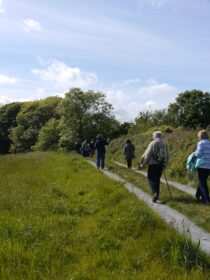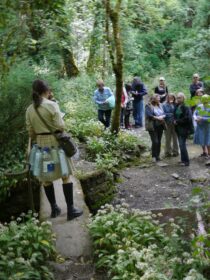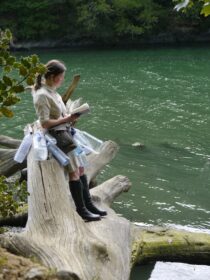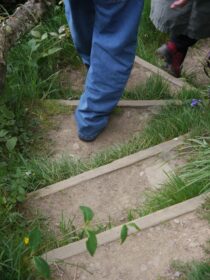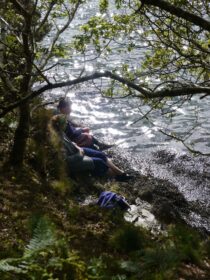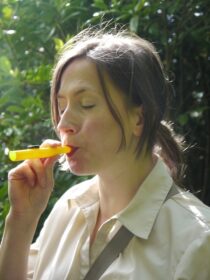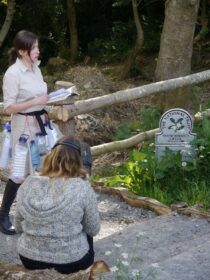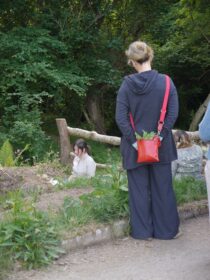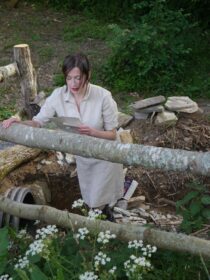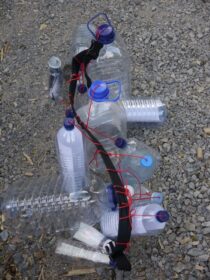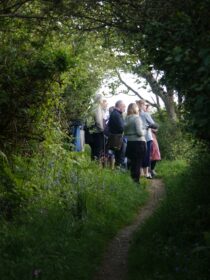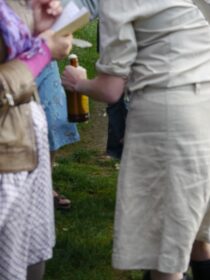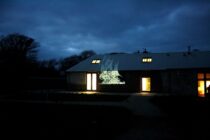Frenchman’s Creek: A participatory programme of photography, projections, performance walks, artists’ talks and gallery meals.
16 April - 22 May 2011
This is a mixed exhibition based on Frenchman’s Creek as a place situated close to Kestle Barton the Rural Centre for Contemporary Art on The Lizard, Cornwall and the site of Daphne Du Maurier’s novel Frenchman’s Creek (1941). Four artists were asked to make new work for this exhibition.
The photographer Ian Brown has developed a technique of photography that enables one final photograph to represent a time-based ‘walk’ – a montage of many points along the walk to create the image. In addition to featuring four of these ‘walking’ photographs, the exhibition also includes stills from this process. Portraiture is another aspect of Ian Brown’s photography that he uses in this body of work to explore the relationship between the heroine of the novel and contemporary readings of figurative representation and place. All of Ian Brown’s photographs are for sale in limited editions.
Alongside Ian Brown in the gallery at Kestle Barton is the film by Bruce Davies, who chose to explore the path along Frenchman’s Creek with a microscopic lens on his digital video camera and a microphone. Using a ‘quadrant’ method to designate specific areas along the path, he then filmed the insects and growth found in that area. The result is 13 short segments of film with corresponding soundscapes.
Rupert White’s contribution is {ghostship}, a projected image on the outside wall of the gallery that is visible after dark. Evening events have been scheduled during the Daphne Du Maurier festival – on Saturday 14 May and Saturday 21 May that will provide opportunities to view the piece.
As a part of this programming, Katie Etheridge has devised a performed walk that will lead participants around Frenchman’s Creek for an immersed experience of the place. This will be performed on Saturday 14 May and Friday 20 May, also during the Festival.
On Saturday 21 May there will be a free Artists’ Talk and an opportunity to hear how each of these four artists approached the remit of making new work for this show.
On these same two Saturdays ticketed Gallery Meals will be served at Kestle Barton, featuring locally sourced food. This will be an opportunity to eat before each the two scheduled film screenings: Frenchman’s Creek (1944) on Saturday 14 May and Hitchcock’s The Birds (1963) written by Daphne Du Maurier on Saturday 21 May.

